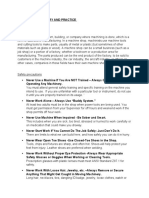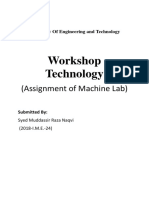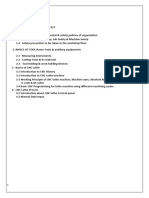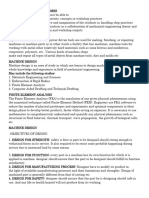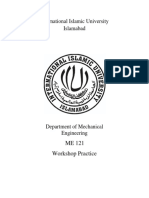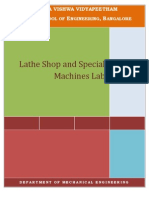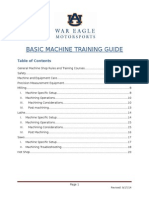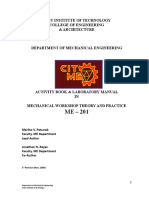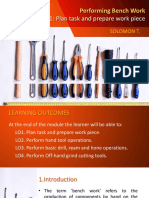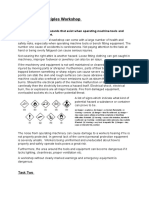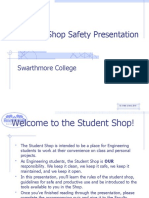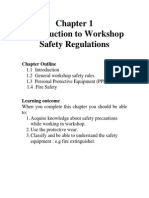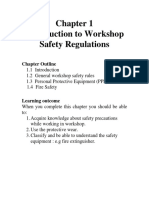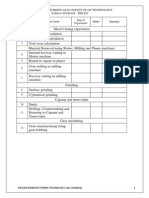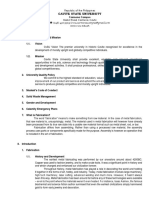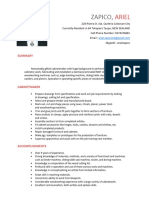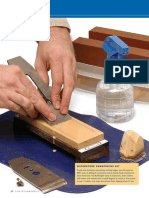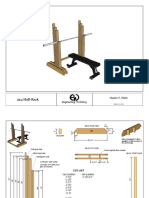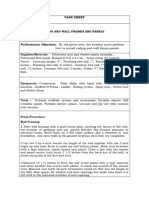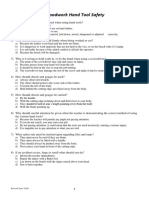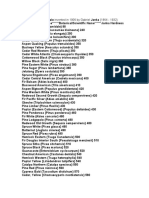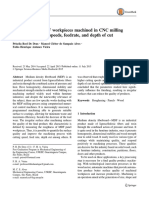0% found this document useful (0 votes)
64 views11 pagesCommon Hand Tools in Machine Shop
The document outlines common hand tools used in a machine shop, including calipers, dial indicators, edge finders, and various gauges, along with their specific functions. It also details essential safety precautions, such as wearing eye protection, working in pairs, and adhering to a strict dress code to prevent accidents. Additionally, it emphasizes safe work practices and the importance of proper tool usage and maintenance in the workshop environment.
Uploaded by
Margaux SmithCopyright
© © All Rights Reserved
We take content rights seriously. If you suspect this is your content, claim it here.
Available Formats
Download as DOCX, PDF, TXT or read online on Scribd
0% found this document useful (0 votes)
64 views11 pagesCommon Hand Tools in Machine Shop
The document outlines common hand tools used in a machine shop, including calipers, dial indicators, edge finders, and various gauges, along with their specific functions. It also details essential safety precautions, such as wearing eye protection, working in pairs, and adhering to a strict dress code to prevent accidents. Additionally, it emphasizes safe work practices and the importance of proper tool usage and maintenance in the workshop environment.
Uploaded by
Margaux SmithCopyright
© © All Rights Reserved
We take content rights seriously. If you suspect this is your content, claim it here.
Available Formats
Download as DOCX, PDF, TXT or read online on Scribd
/ 11
